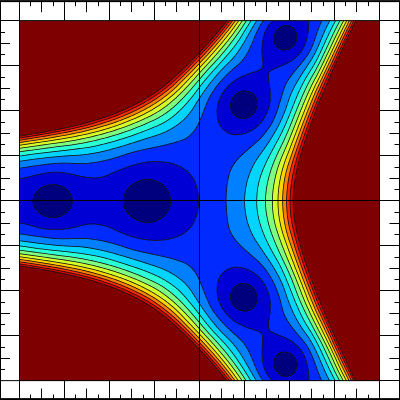Mathematical Methods in Chemical Engineering (ChE 2410)
Fall 2016
The objective of this course is to learn mathematical methods used in chemical engineering -- primarily those dealing with solving differential equations. By the end of the course students should be able to apply these methods to tackle the kinds of problems that appear in chemical engineering research.
Course information
- Syllabus (Click to download)
- Tuesdays, 6:30-8:45PM
- 938 Benedum Hall
- Prof. Wilmer's office hours: Mon 4-5PM, Tue 5-6PM
Supplemental reference material:
- Numerical Solution of Partial Differential Equations: Finite Difference Methods, By: Alvin Bayliss (Click to download)
- Paul's Online Math Notes: Differeential Equations, By: Paul Dawkins (Free e-textbook on differential equations in the "downloads" section)

Announcements:
Oct. 11th, 2016: The Jupyter notebook we wrote last class (Oct 4) implementing Forward Euler and Lax-Friedrichs is available for download here.
Oct. 4th, 2016: The second homework assignment has been posted. Also, I will introduce Sympy in class today briefly. For more informationa about Sympy, please check out the helpful video introduction/tutorial below:
Sept. 28th, 2016: The Jupyter notebook we wrote in class implementing forward differencing for a simple differential equation (y' = y) is available for download here. Here's the PDF version.
Sept. 12th, 2016: First homework assignment is out (see below)! Some of the questions you should be able to solve right away. Other questions will require material that we will go over in the next class. If you really want to try and finish the entire assignment this weekend, you will need to consult the first 10-20 pages of the Numerical Methods course notes (available for download on this page).
Sept. 12th, 2016: Remember to bring your laptop to the next class (Sept 20th). We will be writing short programs to solve differential equations. We will be using Python and Jupyter notebooks, which are free, open source, and increasingly the tool-of-choice for scientific/mathematical programming across academia and industry. Basic installation instructions are given below:
- Install Miniconda (if prompted, make sure to pick the Python 3 version instead of the Pythone 2 version)
- Install Jupyter by typing (in your terminal/powershell/command-prompt):
conda install jupyter - Run a Jupyter notebook by typing:
jupyter notebook - If your browser opens and shows a Jupyter interface, you're done! Otherwise you might have to troubleshoot.
*Note*: If you would prefer to use MATLAB/Mathematica or some other tool you are more familiar with, that is fine. However, I will doing examples in class using Python and Jupyter, and I will not be able to help you debug your code if you use your own tool.
Aug. 30th, 2016: Welcome to the first day of class!
Homework assignments
- HW1 (Click to download) (Solutions)
- HW2 (Click to download)
- HW3 (Not yet assigned)
- HW4 (Not yet assigned)
Exams
- Midterm (Coming Oct. 11th!)
- Final exam (Not yet assigned)